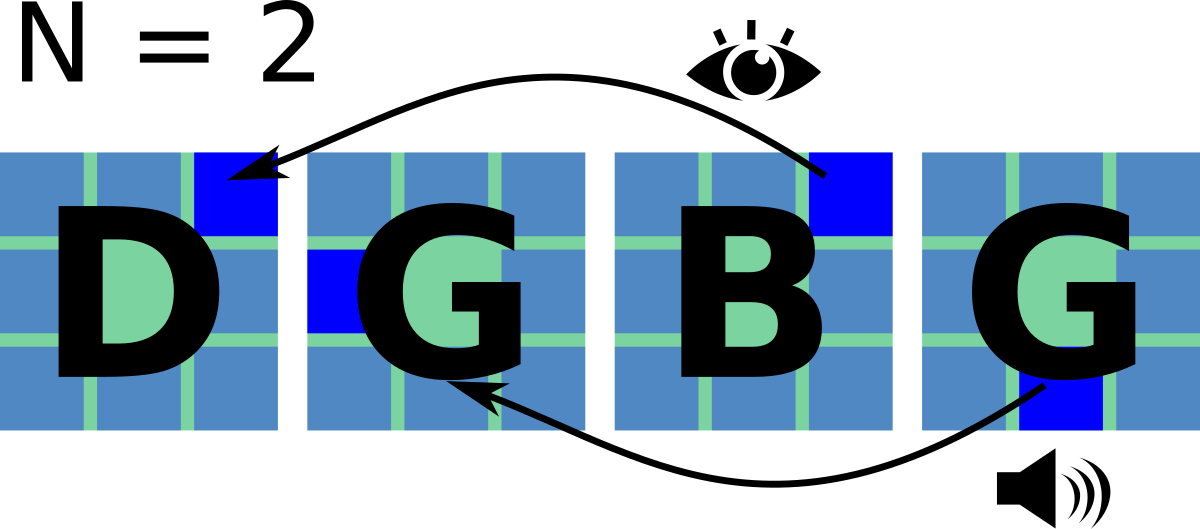Play it online at https://dual-n-back.io/.
Based on the task originally proposed by [1], and adapted by [2]. Dual N-Back has been shown to improve working memory over time. For more information see [3] and [4].
The goal of each level is to remember the state of the game exactly N timesteps ago.
The game board is a set of eight squares. They will flash in a random order, at three seconds intervals. When you recognize that the same square flashed exactly N steps ago, you press the button.
Simultaneously, one letter is spoken at each time step. When you recognize that the same letter was spoken exactly N steps ago, you press the button.
**Example sequence for N=2 game.** The player must remember the state of the game board N steps ago. If you do well, N will increase on the next round. If you don't do so well, N will decrease on the next round (down to N=1). There are 20+N time steps in each round.Based on the work of [1], [2], and others. Audio clips adapted from [5], most of the icons are from [6].
[1] Jaeggi, S. M. et al. Does excessive memory load attenuate activation in the prefrontal cortex? Load-dependent processing in single and dual tasks: functional magnetic resonance imaging study. NeuroImage 19, 210–225 (2003).
[2] Blacker, K. J., Negoita, S., Ewen, J. B. & Courtney, S. M. N-back Versus Complex Span Working Memory Training. J Cogn Enhanc 1–21 (2017). doi:10.1007/s41465-017-0044-1
[3] https://www.npr.org/sections/health-shots/2017/10/23/558767704/in-memory-training-smackdown-one-method-dominates
[4] https://en.wikipedia.org/wiki/N-back#Dual_n-back
[5] http://soundbible.com/2009-A-Z-Vocalized.html (Creative Commons Attribution 3.0 license)
[6] http://simpleicon.com/ (Pretty much same as the CC Attribution license)
